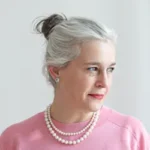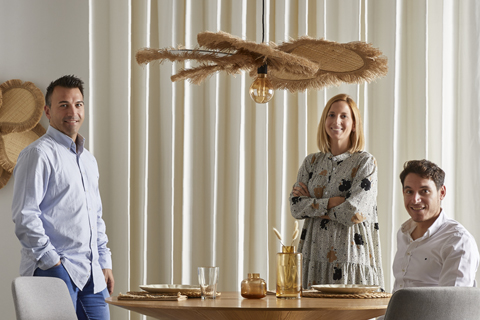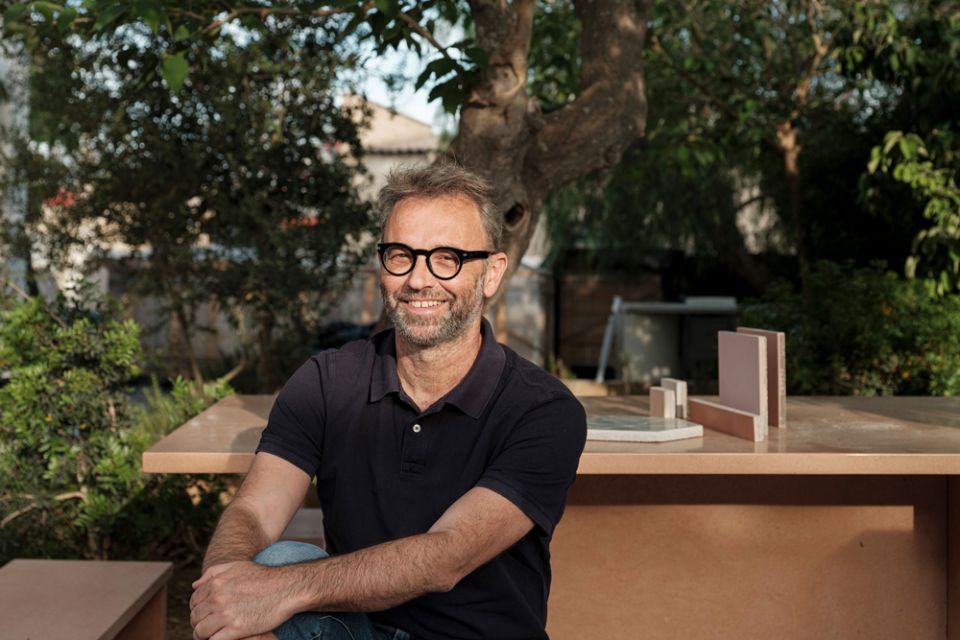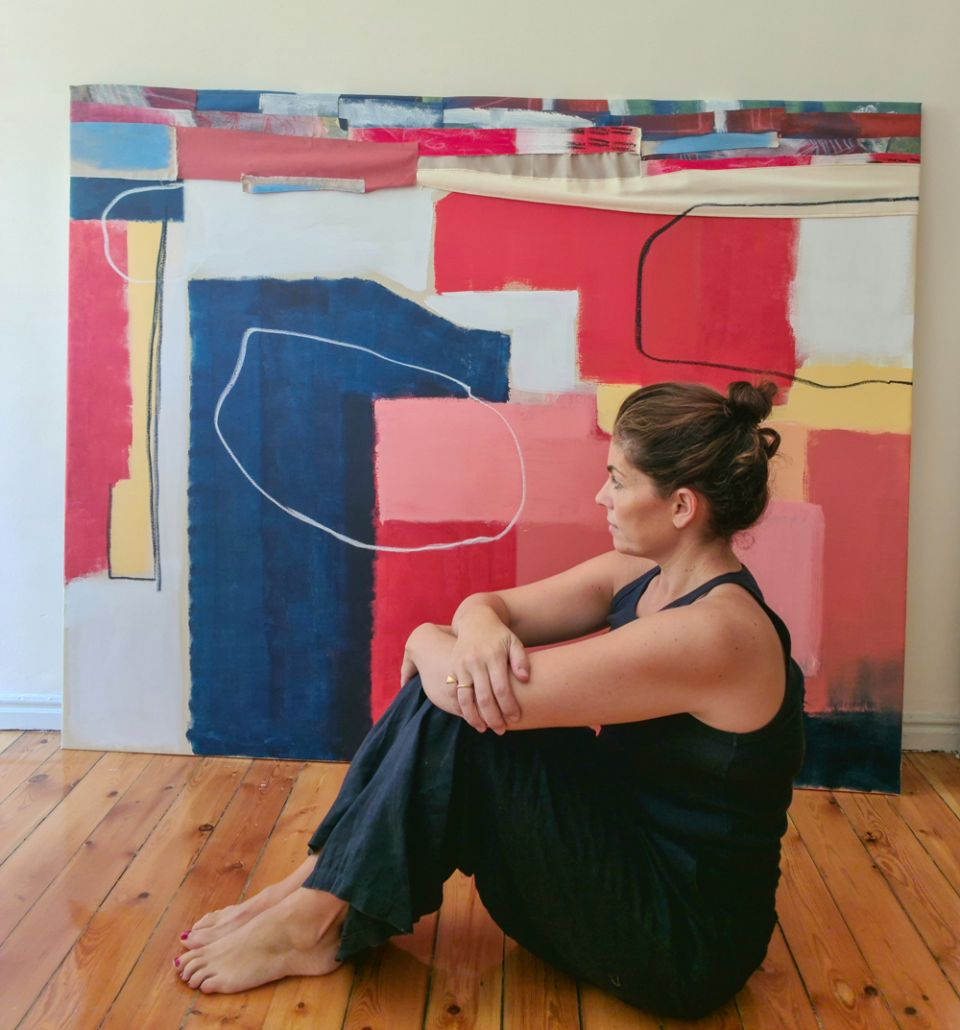JATAFARTA: CRAFTS AS A POSSIBILITY FOR CHANGE
Edita R. Oca is responsible for the JATAFARTA project and is in charge of the direction and management of both design and production in the workshop.
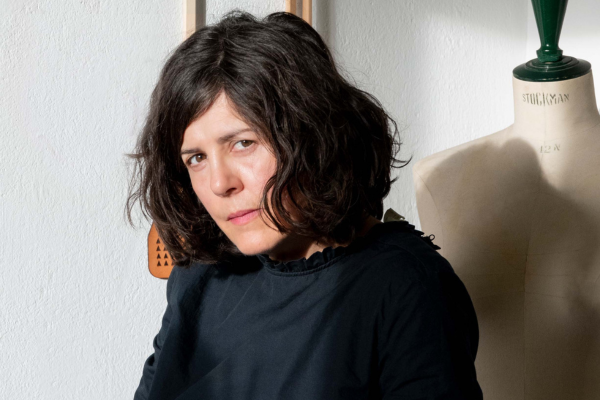
His working philosophy is clear: craftsmanship is presented as a possibility for change. "I find more and more hope in artisanal ways of doing things because they are rooted in a long tradition and also protect values such as quality, small scale, exclusivity, locality, careful work, creativity and responsible forms of use".
Photo: David Silva
1. Tell us about yourself and your work. Where did your vocation begin? Any first memories?
I grew up surrounded by materials, tools and machines found in my parents' workshop. Then I learned volume techniques at the School of Applied Arts and years later I studied Fine Arts. This was my environment, so actually becoming a craftswoman was not a specific decision, but I was lucky enough to be immersed in this environment from a very young age.
I started the JATAFARTA The company has been in business for about twelve years with two well-defined production lines: accessories and jewellery on the one hand, and decorative objects on the other. However, it is not only the functionality or decoration that organises these product lines, but also the
On the one hand, I create pieces made with the raw material in its most natural state, in its raw state, so it is possible to let its veins show through, and on the other hand, in other pieces I use the material in its raw version, in its natural state, so it is possible to let its veins show through.
The more sophisticated, i.e. deep black or red, thus highlighting the more refined and seductive properties of the leather.
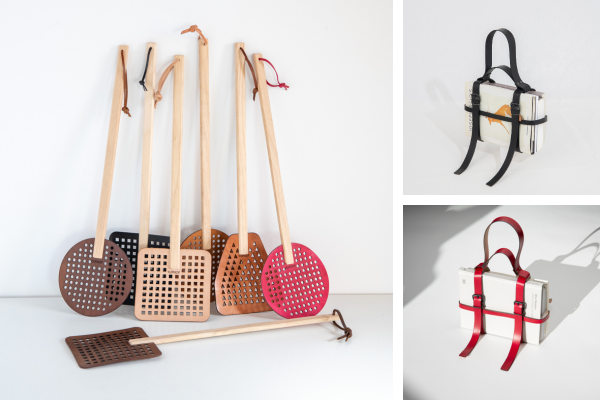
Photos: David Silva
2. What do you find most satisfying about your work, and any that you are particularly proud of?
What I like most are the work processes, the path between the idea and the finished piece, everything in between is what gives me the most pleasure. Participating in all the stages from the creation of the piece until it is ready for the client is a job full of challenges, surprises and learning where it is possible to do anything but get bored. Of the works I do, I would highlight the book holder and the fly swatters, they are among the simplest pieces in the catalogue, but they respond to the idea of recovering forgotten objects and reinterpreting them, which is one of my creative proposals around the object and they are curiously the ones that are most commercially successful.
3. What is your creative process like? What are your sources of inspiration? Any particular music while working?
The creative process is an organised and methodological process that in my case normally begins with drawing and compiling images, then moving on to making models, sometimes out of cardboard, in order to define the final templates and patterns. Each project is different, some are worked on almost to the end on the pattern in a very analytical and calculated way, but others are more experimental and require more direct action on the material.
As far as inspiration is concerned, anything can light the fuse: a book, the work of an artist, experiences... any experience can be a starting point. It can also start with a chance occurrence, an "accident" in the workspace or an encounter with an artist.
The inspiration comes from a chance combination of materials, techniques, or solutions that are being experimented with for something specific and that leads to another idea or approach. On other occasions, inspiration comes from observing the world and reflecting on it.
4. Favourite colour, book, film and record - in that order! ;D
- Magenta.
- Fashion and other neuroses by Katja Eichinger. I have just read it.
- Jeanne Dielman, 23, quai du Commerce, 1080 Bruxelles (1975) by Chantal Akerman, which is now available in restored copies on Filmin.
- In music, it's hard for me to stick to one thing in particular. I have had absolute devotion to flamenco in general and to Camarón in particular, Camarón's record Our is a marvel, but lately I hardly listen to it. I'm really into electronic music and every day I discover something new.
5. Is your home a reflection of who you are? Tell us what it smells like, your favourite corner, your favourite decorative object or piece of furniture, if you treasure a collection... And if you have a pet, introduce it to us!
I have a friend who knew several of my houses and one day she told me that my things are always placed as if I was going to run away at any moment. Unhung pictures, unpacked boxes, few decorative elements, books everywhere, lamps that change places... I suppose it has to do with my permanent situation as a tenant or because of my difficulty in organising myself with space, I don't know... I don't know... Now I live in a flat in the old town of Santiago, with a wonderful gallery, which is my favourite place, where I have a sofa and a small table and lots of light; I go there to have tea, to clear my eyes, to read and to play with Manchis, my tortoiseshell cat, who has been very talkative lately.

6. If you could buy anything right now and take it home, what would it be? Anything!
An Eames Lounge Chair designed by Charles and Ray Eames in 1956 in white leather, for example 😀
7. A great plan at home always includes...
Friends, good conversation and red wine.
8. Do you have a signature dish?
No, I love food, but not so much cooking. At home I always opt for lightly prepared dishes and try to eat seasonal produce. I am lucky enough to live next to the food market where there are all kinds of fresh fish, meat and vegetables and I can improvise every day.
9. What is your favourite place in your city and abroad?
Santiago has very beautiful places, lots of parks and green areas just a minute away from the centre that allow you to disconnect from the tourist crowds. I love to take long walks and when I do, I don't think too much about where to go, I just let myself go, it doesn't matter which direction you choose because in fifteen minutes, at most, you're out of the city in totally rural areas, without too many cars and with lots of nature.
From abroad I fell in love with New York, I would like to spend some time there.


